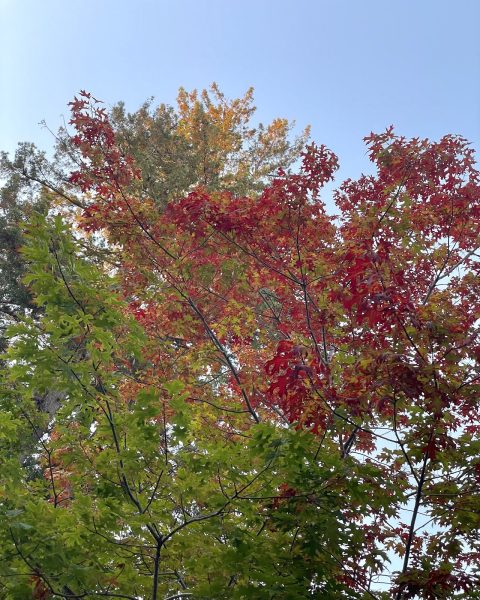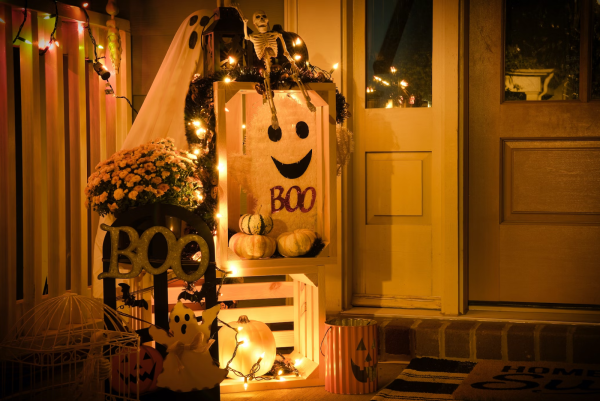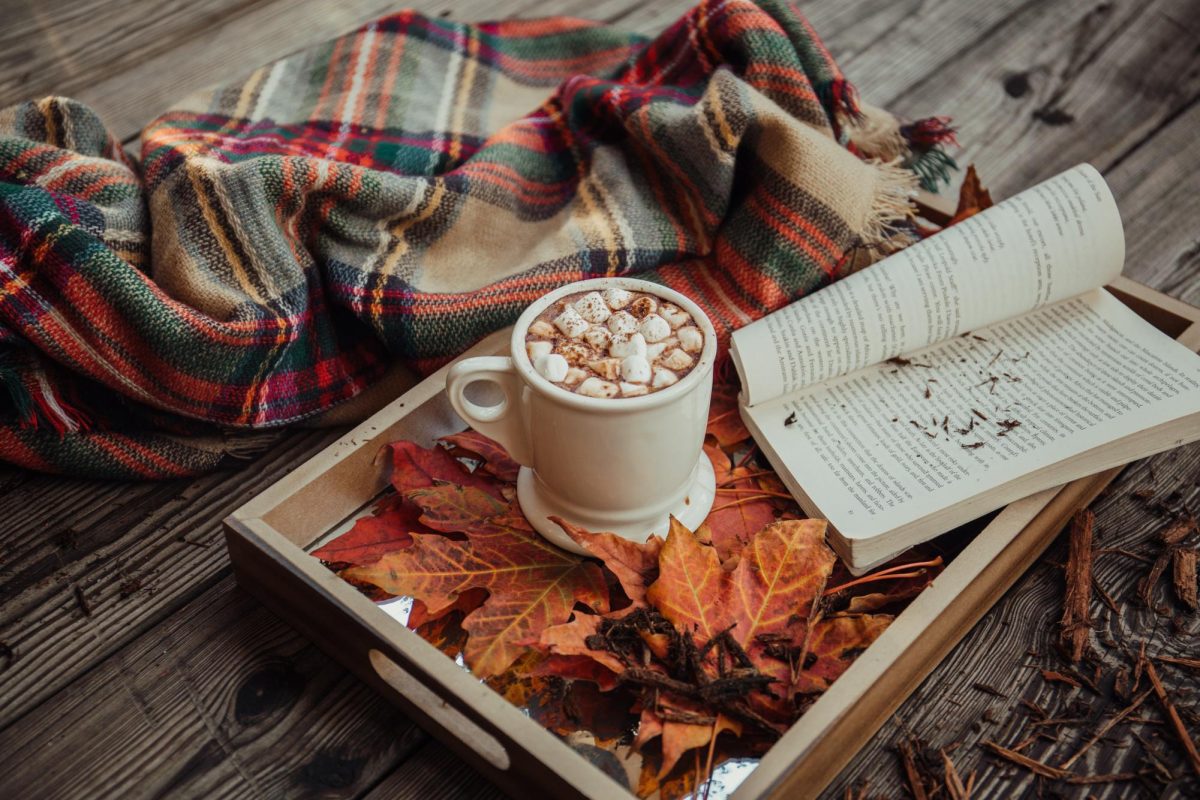If you approached a stranger and asked them to describe their favorite season, they could tell you about the chilling thrill of Winter, the hot excitements of Summer, or the fresh bloomings of Spring. Studies show that almost half of these strangers will tell you about Autumn. What makes Autumn, the season that involves the decay and withering of plants and the slow but certain drop in temperature, so popular? The answer lies in romanticism.
Not to be confused with the Romanticism Era, an art movement dating back to the 19th century, romanticism is characterized by the attitude in which people see an object or idea through a romantic lens, rather than a realistic one.
Romance, frequently associated with love and passion, can also have a deeper meaning, in which people imagine an idealistic, glorified world shaped by their own desires. The exact definition of romanticism is when people try to make the most uninteresting parts of their lives as interesting as possible by changing their mindsets and perceptions.
The term was revived due to social media exposure, when teens on apps like Instagram and TikTok began to post videos or pictures of themselves ‘living life to the fullest.’ They dressed up in stylish clothing, took pictures of themselves, and created playlists for certain moods. Seeing how anything could be made into something pleasant, this method is known widely as romanticism. Unsurprisingly, the main methods of romanticizing stem from the art movement, where art, fashion, and music cultivate emotion and individualism.
In an attempt to fit into aesthetics and standards set by social media, the teenagers of today’s world turn to romanticism to make it seem like they are living the ideal life, the type of sophistication that you might find in a coming of age movie or a popular pop song. In some ways, romanticism has become an underlying mindset in today’s society, or even a defense mechanism. To forget about their worries and stress, people try to lessen their frustrations by making their burdens more approachable.
Another reason people might romanticize their lives is because of their desire to fit in and escape reality; in a time where social media seems to run the world, people are desperate to appeal to others and become the norm. Social media intake, while meant to be enjoyable and sometimes enlightening, takes over people’s minds and plants unshakeable roots in their brains. To cope with the negativities of our lives, we depend on social media to distract ourselves even more from what is around us.
For many, Autumn is a prime victim of romanticism, whether people realize it or not. Although one of the primary reasons Autumn is enjoyed so enthusiastically by all age groups is the climate – not too hot and never too cool – there is undeniably an underlying factor that deems Autumn an overly appreciated season, making it the only season that is unrivaled in popularity.
Similarly to how we structure seemingly mundane aspects of our lives to beautify everything around us, Autumn is widely characterized as a cozy and peaceful season when it can sometimes be anything but. Non-negligible cons are overshadowed by the following pros: forget the dead leaves that crackle loudly under your every step and focus on the astonishing, varying shades of greenery. Adapt joyfully to the dropping temperatures and take the chance to wear your favorite sweaters and hoodies. Admirably rid your head of thoughts about the start of school and look forward to festive holidays such as Halloween and Thanksgiving.

Although teenagers today most likely associate Autumn with school and studying, they are able to defuse and even look forward to the workload that comes with classes because they equip themselves with a favorable mindset that transforms their environment into their biggest support system. Inspired by how the leaves of Autumn change colors and transform into something else entirely, students can switch gears and get ready for what is to come throughout the school year. The bountiful harvest of Autumn crops is a direct analogy to the blooming of students ready to tackle the new year.
Having the climate and the greenery around you accompany you on this journey is a big encouragement and makes it feel like you are in control of yourself. As the leaves change, people do too; the trees shed their decaying leaves and remind people that it is okay to let things go and start anew. This feeling of control is very valuable to a teenager when societal pressures are enforced onto you and time seems to be ticking mercilessly.
To further feel in control and placate the uncertainty of their lives, teenagers might start to wear darker colors like brown or maroon to get into the mood of Autumn. Even neutral and calm colors can be appreciated when you are equipped with the optimism of adaptation. In fact, Autumn might be the only occasion when teenagers are free to let loose and have fun with their outfits. Adornments like scarves and beanies are worn, adding to the overall wardrobe aesthetics options of teens.
The cooped-up feelings of stress and worry that are repelled by Autumn are not taken for granted. The shadows cast by the sun get longer and hide more, granting our environment a cozy temperament and an inviting atmosphere.
As the weather inevitably becomes colder, instead of woefully dwelling on the longer nights and the unwritten rule to go to bed earlier, teenagers might think about cozily wearing thick clothing and warming themselves under their blankets. Accompanied by a cup of tea or apple cider, they seem to be invincible against the cold and are even able to embrace it. This is only made better when watching a scary movie or a classic Halloween film at the same time.

Most of all, a feeling of invulnerability is created when you arm yourself with excitement for what is to come. Tradition is a huge part of romanticism; valuable memories and customs are created and revisited annually, building up fondness and appreciation.
Some things that everyone looks forward to the most are undeniably the holidays, annual festive occasions that invoke excitement worldwide. Halloween is arguably one of the most popular of these celebrations in the United States, as it offers a day where everyone can be whoever they want. This unrestricted holiday has no limits on creativity or religion; this feeling of liberty further eludes to the enjoyment of Autumn. The spookiness of horror films that are more special in times like these and the token decorations of bats, spiders, pumpkins, and ghosts create a mood that can not be replicated any other time.
Following Halloween is Thanksgiving, a holiday where people give thanks and appreciate everything around them. These holidays follow the first few months of school, offering students chances to settle down and catch their breaths. It is hard not to appreciate Fall when it has a holiday that asks for gratitude and thanks.
Autumn in itself, while a season with acceptable weather and cozy atmosphere, is not so special that it makes the favorite-season-list of almost half of any group of people. Its appeal is mostly due to romanticism, and people of all ages can personally attest to this method playing a part in what they think. Its mood, temperature, meaning, holidays, and freedom are all token elements of Fall that no other season seems to be able to copy.
What makes Autumn, the season that involves the decay and withering of plants and the slow but certain drop in temperature, so popular? The answer lies in romanticism.

